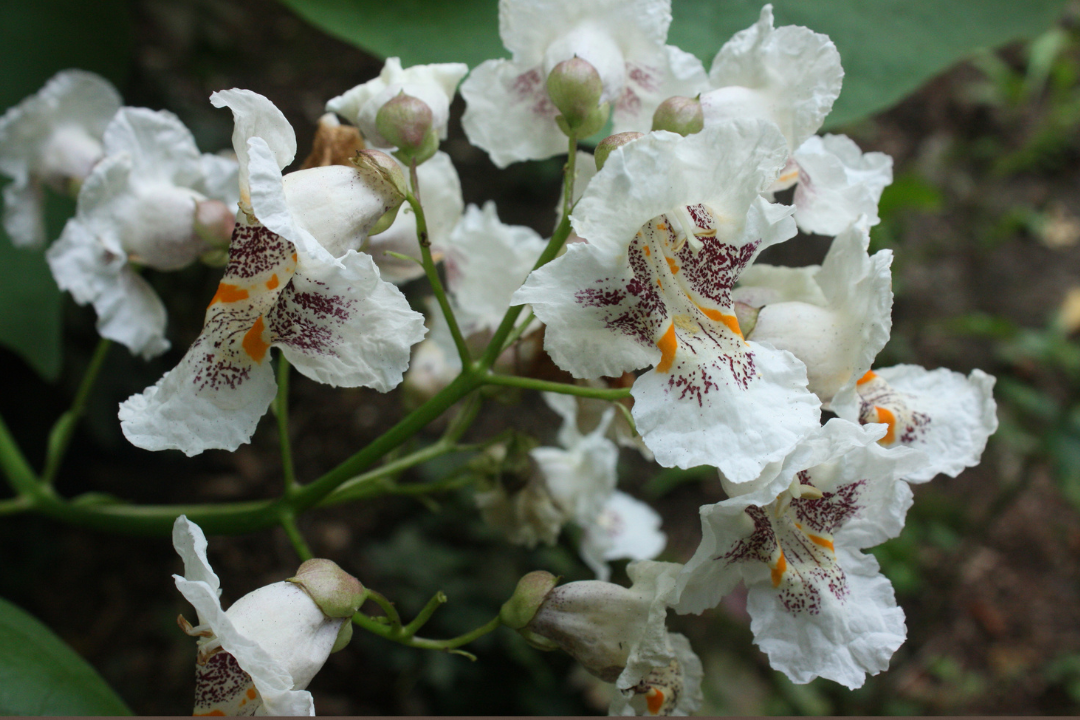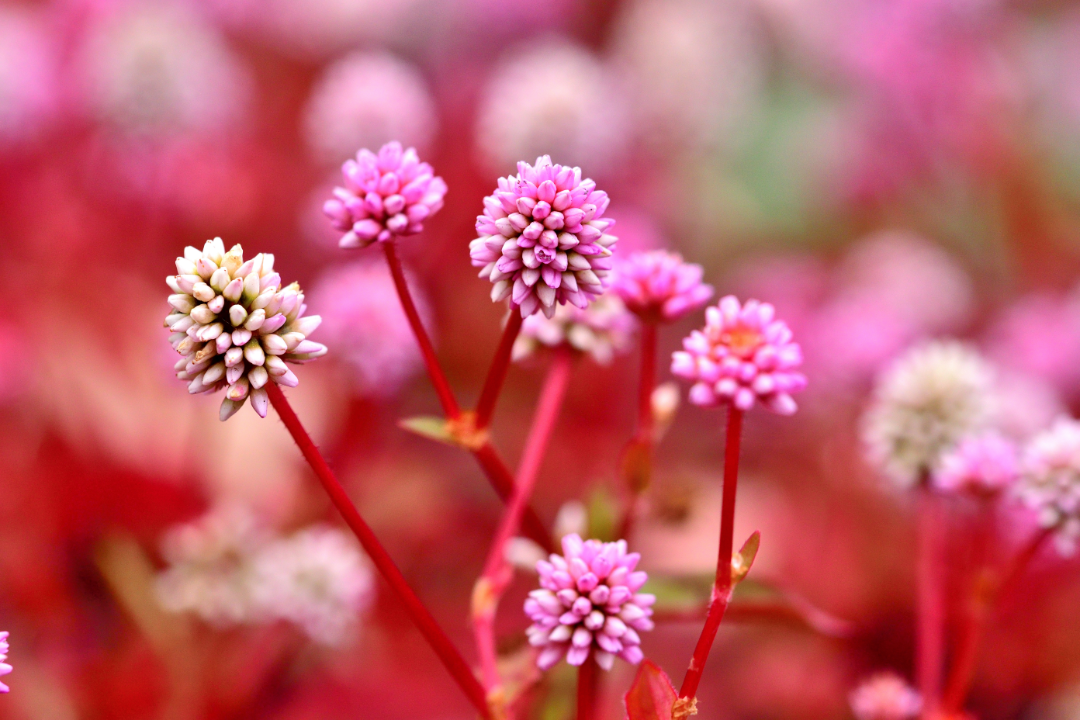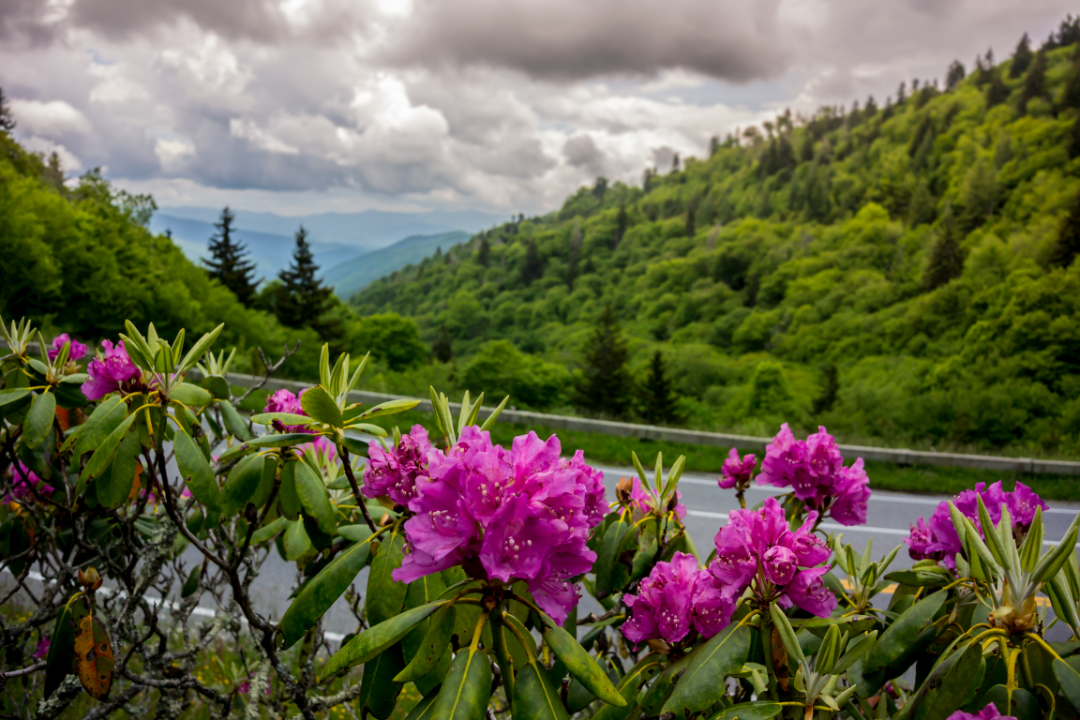The northern Catalpa (Catalpa speciosa) is a beautiful, tropical-looking North American native shade tree with a mysterious past. At one time, its range was confined to part of the Mississippi Valley but sources are admittedly fuzzy about which part. Likewise, the name is definitely Native American in origin but there’s a big disagreement over which tribal language is the source.
RANGE AND FAMILY:
Today, the northern Catalpa (Bignonia family) is found throughout the U.S.A. and southern Canada, as well as in other countries where it has been imported as a combat-ready urban tree. Also found in temperate urban areas are the northern catalpa’s southern Appalachian kin, the southern catalpa (Catalpa bignioides), and its Asian kin – particularly the clearly invasive empress tree (Paulownia tomentose). Those of you from the southwest might know the southwestern native cousin, desert willow (Chilopsis linearis). Many gardeners are familiar with the lovely orange-flowered native trumpet vine, which is the family’s signature member. The Chinese catalpa (Catalpa ovata) is also sold for landscaping.
INVADER OR RETURNING ALUMNI?
Some say that outside of its native range, the northern catalpa is an invader. My home state of Connecticut has labeled the northern catalpa as having “demonstrated invasive tendencies”, which is a no-no of the third degree. (The first degree has been reserved for the worst of the worst, like ailanthus). Being “invasive” means that the plant doesn’t come from the area, can escape cultivation and survive on its own, can spread widely, and can out-compete local native plants.
There is no question that the northern catalpa does not stay where it is planted. My own Hoyt Street Alley hosts numerous northern catalpa specimens both large and small. The northern catalpa’s spread, however, is limited by its natural fussiness as to location – it likes rich, moist, slightly acid soil and just a touch of shade. In other words, it is an edge-of-forest tree that won’t survive in deep forest, and which does well in the open meadow and lawn only with plenty of water, as in the Alley.
But is it an invader?
How come to the northern Catalpa is built to withstand the -30F temperatures in Montreal, if its original range was only in the southern Mississippi Valley? The black locust may be similarly situated. Many say the black locust is an invader in the Northeast, but geologists have found that the black locust was here before the Ice Age. So, the black locust is only reclaiming its original territory. Is the same true of the catalpa? Oddly, it is hard to come by popular-level research publications on the catalpa. Northern Catalpa has even been neglected by the U.S. Forest Service, whose website is normally the source of much good information.
Does it play nicely with others?
To me, this is the more important question. Regardless of whether the northern Catalpa has a pre-Ice Age “green card” permitting it to be outside of the Mississippi Valley, does it add or detract from bio-diversity? Again, popular-level research is hard to come by. Anecdotally, in my area, I have not observed it taking over. It is weedy in that it makes lots of seedling babies.. However, I don’t see pure stands of catalpa where it has crowded out the competition. (I wish that could say the same for certain others such as the ailanthus and Norway maples). In Hoyt Street Alley, the northern catalpa shares space with a variety of trees including the box elder and Norway maples, American elm, eastern cottonwood, red oak, shaggy bark hickory, American sycamore, chokecherry, white mulberry, ailanthus, and native crab apple. The catalpa saplings are hardier than those of most of the other trees (as hardy as the ailanthus in fact), but even the big catalpa trees are being smothered in places by that dreaded invader porcelain vine.
Allelopathic:
There is authority that both the southern and northern catalpas are “allelopathy”, in that they emit chemicals from their roots that prevent other plants’ seeds from germinating. The work done on the southern catalpa indicates that the allelopathic properties only become a problem when the tree is allowed to grow in large, pure stands.



